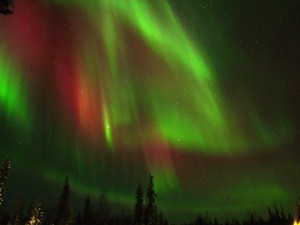NASA continues to monitor solar flares this week
Saturday, March 10th, 2012 4:14:42 by Taimoor Tariq
On March 8, 2012 at 10:53 P.M EST, the sun erupted with an M6.3 class flare which released a CME about an hour later. Apart from the rising geomagnetic storm conditions, the active region 1429 has produced two X class flares and many M-class
flares. The NASA Space Weather Center models show that the CME are travelling at 700 miles per second and they should be reaching Earth’s magnetosphere in the early morning of March 11.
Space weather starts at the sun. It begins with an eruption such as a huge burst of light and radiation called a solar flare or a gigantic cloud of solar material called a coronal mass ejection (CME). But the effects of those eruptions happen at Earth, or
at least near-Earth space. Scientists monitor several kinds of space “weather” events — geomagnetic storms, solar radiation storms, and radio blackouts – all caused by these immense explosions on the sun
A geomagnetic storm is one of the most common forms of space weather and is a time when the magnetic fields continuously re-align and energy moves quickly from one are to another.
When certain types of CMEs connect with the outside of the magnetosphere for an extended period of time, Geomagnetic storms occur. The solar material in a CME travels with its own set of magnetic fields. The sun’s magnetic fields peel back the outermost
layers of Earth’s fields changing the whole shape of the magnetosphere. This is the initial phase of a geomagnetic storm.
The next phase, the main phase, can last hours to days, as charged particles sweeping into the magnetosphere accumulate more energy and more speed. These particles penetrate closer and closer to the planet. During this phase viewers on Earth may see bright
aurora at lower latitudes than usual. The increase – and lower altitude – of radiation can also damage satellites traveling around Earth.
The final stage of a geomagnetic storm lasts a few days as the magnetosphere returns to its original state.
Geomagnetic storms do not always require a CME. Mild storms can also be caused by something called a corotating interaction region (CIR). These intense magnetic regions form when high-speed solar winds overtake slower ones, thus creating complicated patterns
of fluctuating magnetic fields. These, too, can interact with the edges of Earth’s magnetosphere and create weak to moderate geomagnetic storms.
Geomagnetic storms are measured by ground-based instruments that observe how much the horizontal component of Earth’s magnetic field varies. Based on this measurement, the storms are categorized from G1 (minor) to G5 (extreme). In the most extreme cases
transformers in power grids may be damaged, spacecraft operation and satellite tracking can be hindered, high frequency radio propagation and satellite navigation systems can be blocked, and auroras may appear much further south than normal.
Tags: cme, coronal mass ejection, geomagnetic storms, Juan Rosell, NASA Goddard Space Flight Center, solar flare, solar radiation storms, Storyline, Sun
Short URL: https://www.newspakistan.pk/?p=15355

















